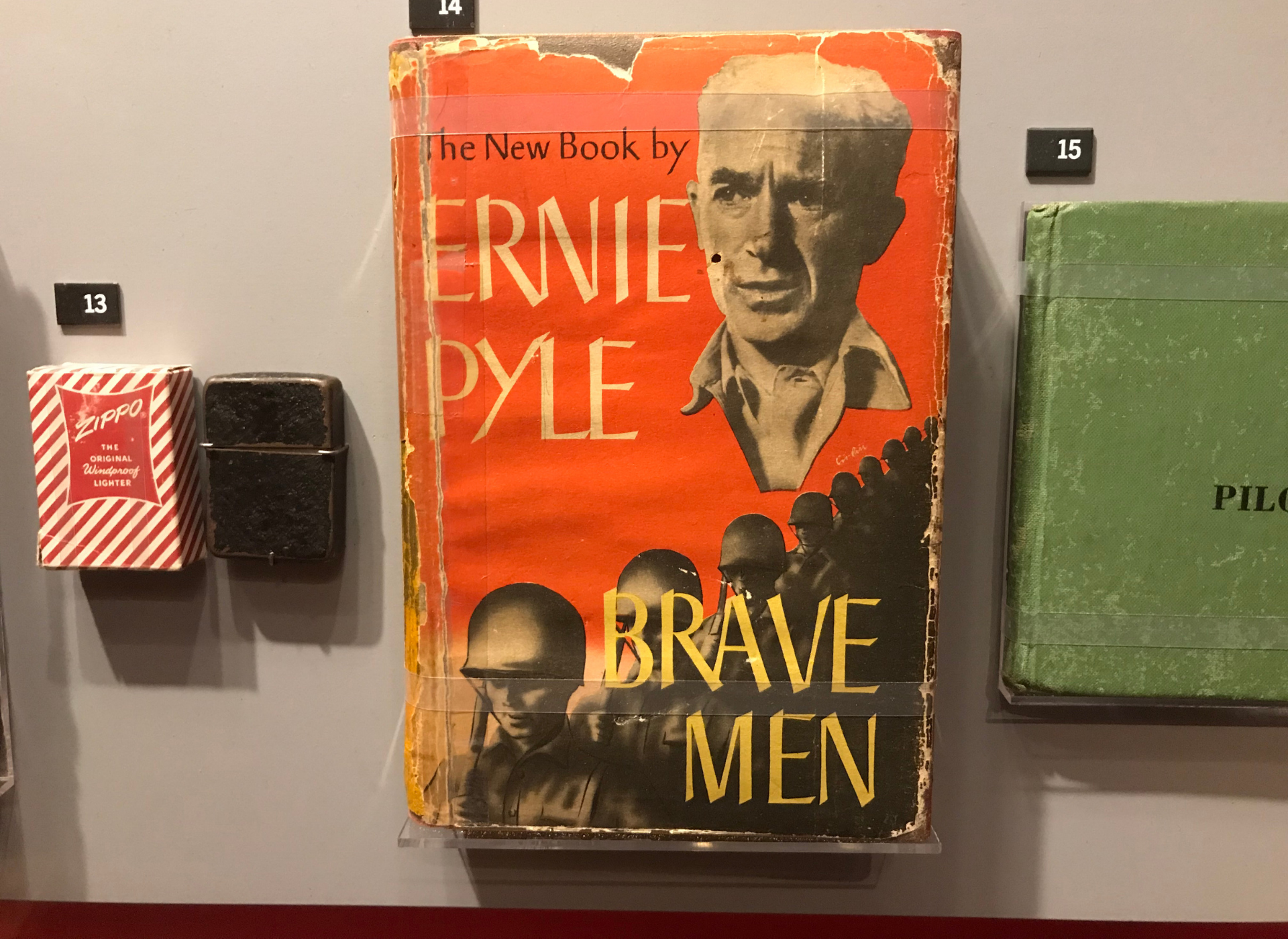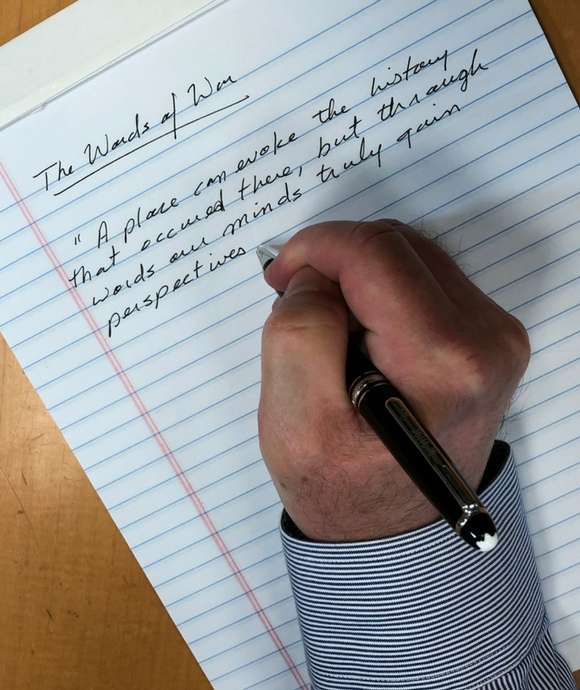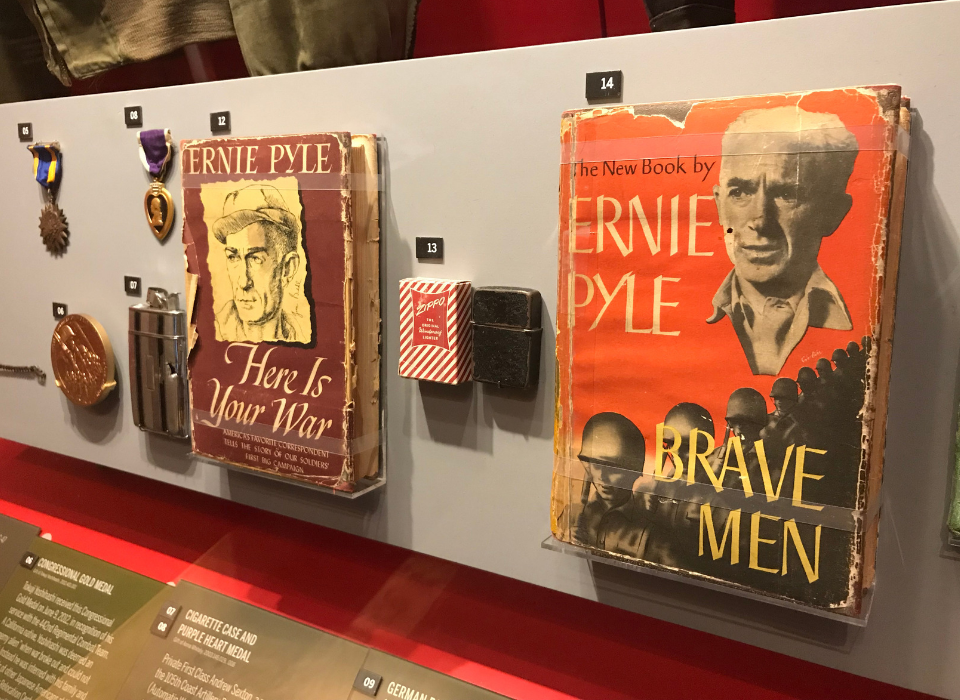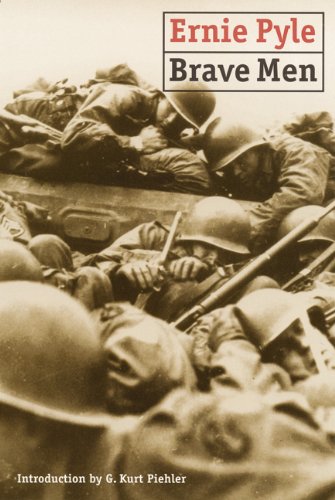“'This one is Captain Waskow,'” one of them said quietly.
“Two men unleashed his body from the mule and lifted it off and laid it in the shadow beside the stone wall. Other men took the other bodies off. Finally, there were five lying end to end in a long row. You don’t cover up dead men in the combat zones. They just lie there in the shadows until someone comes after them.
“The unburdened mules moved off to their olive grove. The men in the road seemed reluctant to leave. They stood around, and gradually I could sense them moving, one by one, close to Captain Waskow’s body. Not so much to look, I think, as to say something in finality to him and to themselves. I stood close by and I could hear.
“One soldier came and looked down, and he said out loud, ‘God damn it!’
“That’s all he said, and then he walked away.
“Another one came, and he said, ‘God damn it to hell anyway!’ He looked down for a few last moments and then turned and left.
“Another man came. I think he was an officer. It was hard to tell officers from men in the dim light, for everybody was bearded and grimy. The man looked down into the dead captain’s face and then spoke directly to him, as though he were alive, ‘I’m sorry, old man.’
“Then a soldier came and stood beside the officer and bent over, and he too spoke to his dead captain, not in a whisper but awfully tenderly, and he said, ‘I sure am sorry, sir.’
“Then the first man squatted down, and he reached down and took the captain’s hand, and he sat there for a full five minutes holding the dead hand in his own and looking intently into the dead face. And he never uttered a sound all the time he sat there.
“Finally he put the hand down. He reached over and gently straightened the points of the captain’s shirt collar, and then he sort of rearranged the tattered edges of the uniform around the wound, and then he got up and walked away down the road in the moonlight, all alone.”
Ernie Pyle, Brave Men, p. 165-166.
September 2018 marks the 75th anniversary of the Allied invasion of Italy. Perhaps no war correspondent in World War II was better known back home, and better loved by the troops in the field, than Ernie Pyle. His column on the death of Captain Henry Waskow in Italy remains deeply moving for its portrayal of soldiers in combat losing a leader who they all trusted to take them through the war.
Henry T. Waskow was born in DeWitt County, Texas, on September 24, 1918—100 years and one day before this post's publication date. Of German descent, Waskow graduated from Trinity University in Texas in 1939, but turned down an offer for a career teaching at the high school in his hometown of Belton because he expected to be called to full-time military duties. Waskow was an officer with the Texas Army National Guard, 143rd Infantry Regiment, which was a part of the US Army 36th Infantry Division. Despite his youth, the men who served under him were profoundly attached to him because of his personal integrity. Waskow first experienced combat during the Salerno landings in September 1943. In December 1943, Waskow was in the midst of fierce fighting in the mountains at the notorious battle for San Pietro. On December 12, he was leading his men from a tree line to attack a German position at Hill 730 when fragments from artillery fire cut him down, killing him instantly.
Captain Waskow’s body remained where he was slain for three days while his assistant, Riley Tidwell, descended the mountain to inform their superiors of his death. Ernie Pyle encountered Tidwell, heard the story, and waited until Waskow’s body could be recovered and brought down the mountain. He witnessed the emotional scene between the dead man’s corpse and the men of his unit on December 14. Pyle wrote his column on Waskow a few days later at Caserta, but he harbored deep doubts about the value of his work to portray the full meaning of the events he witnessed. He confessed his doubts to his fellow war correspondent Don Whitehead, who was deeply impressed by the column and urged Pyle to publish it. After Waskow’s family was notified of his death, Pyle’s column was published by Scripps Howard press on January 10, 1944, and was an immediate and massive sensation.
What remains memorable today when one reads Pyle’s account of Henry Waskow’s death is not just the depth of respect displayed by the soldiers for their fallen leader. What stays is the absolute finality—the confrontation with death that these men must shoulder, and transcend. They must continue to fight—and win—a brutal war so that the sacrifice of the many thousands of men like Henry Waskow might attain a transcendent meaning. The image of a beloved, dead young man in the shadow of a low stone wall on a remote mountain in Italy, so far from the Texas home which he likely would never have left except for the war, illustrates the ultimate sacrifice that young Americans were making all over the world. But that was not all. Pyle depicted the reality of men who experienced the sacrifice of young soldiers like Henry T. Waskow, and like them found that he, too, had to resume walking down the road of war alone, leaving departed friends behind—but not forgotten.
Learn more about the Duchossois Family Road to Berlin: European Theater Galleries.


“A place can evoke the history that occurred there, but through words our minds truly gain perspectives and understanding of what it was like to know, feel, experience, hope, fail, triumph, and live through events from which we ourselves were absent. The written word is our most intricate map to retrace and reconstruct what we think happened, and ultimately brings us back to ourselves.”
– Keith Huxen, PhD , Senior Director of Research and History, The National WWII Museum
Keith Huxen
Keith is the former Senior Director of Research and History in the Institute for the Study of War and Democracy at The National WWII Museum.
Cite this article:
MLA Citation:
APA Citation:
Chicago Style Citation:






![Max Fuchs, New York City cantor, sings as Rabbi Sydney [sic] Lefkowitz, Richmond, VA, conducts the first Jewish services from Germany.](/sites/default/files/styles/max_650x650/public/2025-10/image1.jpg)



